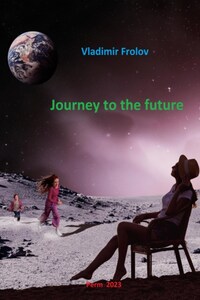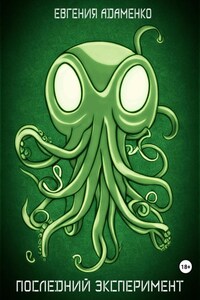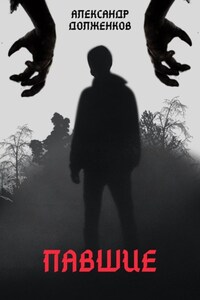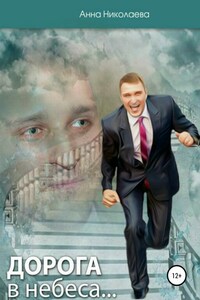After listening to Kharin's report, the professor of the research expedition, who is also the commander of the Pegasus ship Arthur Stolz, cheered up. Wow, the P-214 transistors, released back in the USSR in 1970, came in handy here in 2028! It's been about 60 years – how strong was the stock of scientific thought in the USSR! Professor Stoltz was a little over fifty, and he still found the school of Soviet scientists who taught to think, to invent in non-standard ways, but all within the limits of logic! Yes, there were times, it was a time of discovery, when 70 percent of the inventions of all mankind fell on the seventies of the twentieth century. He sat down at the work table and began to fill in the logbook, the reserve of electricity allowed him to work with emergency lights, and in three days Kharin's solar battery should be ready – despite all the laboriousness, this was the last hope! He filled out the journal, thought, pondered and looked out the window – the ship was leaving the shadow of the Earth, exposing its sides to the Sun.
And then he saw a group of people – they sang softly and walked with banners in a parallel course. Yes, yes, in space, in a parallel course. At sunny dawn, the picture seemed incredible! He looked closely and saw the wings of people – there were seven of them. "Yes, these are angels!" – Arthur exclaimed and hurried to film everything on a video camera, while calling his colleagues. The entire crew of the ship saw angels. It was the middle of March earthly time, the time of Great Lent, and everyone together, rejoicing at what they saw, began to sing songs of praise to God. Of course, not everyone on the ship was a Christian, but a small group of scientists, ossified atheists, suddenly began to make crosses from improvised means and hang them around their necks. The vision of the angels was about five minutes, and everything was filmed, even their chants were caught on film. Thus, the month of the ship's stay in Earth's orbit was coming to an end. There were many experiments ahead, but this very “cosmic” one, by the will of the Creator, remained forever in the memory of people!
TRAINING OF THE SMELL OF THOUGHTS.
When Professor Arthur Stolz was still a student, they liked to play the following game as students. While on the bus, they assumed the professions of people by their faces, clothes, demeanor, manner of speaking, and many other signs. It was easy to distinguish retired people from, say, students, but it was very difficult to distinguish a doctor from a teacher – after all, they are both knowledge workers, only if you talk to them, which was forbidden by the rules of the game. While on the bus, students, and there were a few of them no more than 3-4, made notes and, getting off at the right stop, they exchanged notes. There were many similarities. And the one with the most matches was considered the winner.
For example, the military and policemen were easily guessed – the imprint of spirituality on their strict stiff faces spoke about itself. Time passed and the future generation of physics students passed on this game to other students. In the 2000s, a computer, namely artificial intelligence, was connected to the game. In appearance, gait, artificial intelligence was looking for hooligans and terrorists among the passenger flow. The percentage of guessing reached 80 percent, and this is a large percentage. But most of all guessed in the symbiosis of a computer and a person. The man saw what the machine is not able to see – it is the imprint of spirituality on the face of a man. This was achieved by prayer practice, going to services in the Orthodox Church, observing the sacraments of the Church. And now, being in the fifth, final year of study, students already felt, as they say, all the passengers of the subway, buses, fellow travelers in the car … It is worth noting that the most spiritually advanced students used what is called penetration into the inner sensory world of a person in this way of “recognizing” information the monks own , professional military, judges.
But the world was developing, progress was and quickly went in computer technology. In 2010, the computer was already controlled without wires, by the tension of the operator's thought. Although not all of these experiments were in the public domain, they were. And then the main question arose – can a high-power computer read the thoughts of people, for example, riding a bus? It turned out maybe, but in those days it was a cumbersome technique, but already in 2025 this technique was reduced to the size of a pack of cigarettes. Of course, as before, a great result in personal identification was given by the symbiosis of a person and a computer, or rather, a person and Artificial Intelligence. And here we come to the main scientific experiment of the research team on the Pegasus. That's the point. While on the bus, a person with a computer, even the smallest one, should be in close proximity to the person being checked. What if it's a terrorist? So, the idea arose to "feel", to read the mental images of people at a distance – from space, for example.
An ultra-high frequency wave was fed through a powerful beam of rays; on Earth, this beam occupied a radius of five to half a meter in diameter, depending on the settings. The operator, via satellite, probed the crowd of people in order to search for people with negative, aggressive thoughts. And having identified them, they connected the whole complex of operational-search measures. There was also the other side of the medal in this experiment – the transfer of energy at a distance to a person who was injured, for example, a sick person, walking on the way. A certain frequency was transmitted by a beam from space from a satellite, naturally not heard by anyone, it then set the pace for the work of the human brain and, if necessary, could remove all the necessary characteristics from a wounded warrior. But this is the military side of the experiment. All theoretical calculations were in the twenties of the 21st century, and the year was already 2028. So everything, both the level of technical equipment of the ship and the scientific level of the researchers, was up to the mark. The composition of the team was international, for example, Vasily Kharin was Russian, from Perm, he was 42 years old and this was his second space expedition. Working as a flight engineer and part-time biologist, he knew almost everything about the ship and about the man. "Psychobiomechanical system – man" – as he liked to say.








